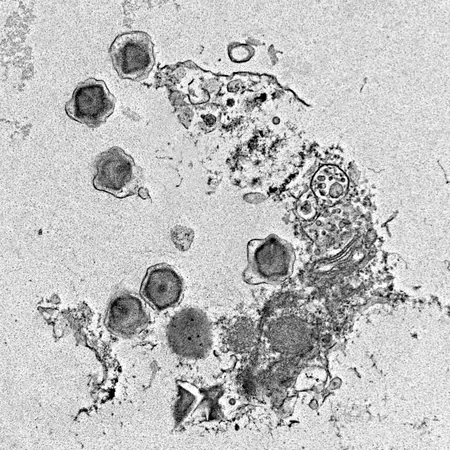
Groundbreaking Discovery: 230 New Giant Viruses Transform Our Understanding of Ocean Life
2025-06-07
Author: Sarah
Unveiling the Giants Beneath the Waves
In a groundbreaking study, scientists have unveiled 230 previously unknown giant viruses that play a crucial role in the intricate ecosystem of our oceans. These colossal viruses are not just massive; they are key players in the survival of microscopic marine organisms like protists, which include algae and amoebae. These single-celled entities form the foundation of oceanic food webs, supporting everything from tiny fish to massive whales.
The Connection to Public Health
But it isn't just marine biodiversity at stake. These giant viruses can influence public health, contributing to dangerous algal blooms that threaten coastal communities worldwide. The research from the Rosenstiel School of Marine, Atmospheric and Earth Science provides vital insights that could aid local authorities in anticipating and managing these hazardous blooms.
Innovative Research Methodologies
Using cutting-edge, high-performance computing techniques, the research team delved into publicly available marine metagenomic datasets. Their findings, published in the esteemed journal *Nature npj Viruses*, reveal a treasure trove of genetic information, including 530 new functional proteins linked to these giant viruses.
A New Dawn for Virus Research
Among these proteins are nine crucial components for photosynthesis, suggesting that these viruses might manipulate their algal hosts to alter the photosynthetic process during infection. "Our enhanced understanding of giant viruses can help us predict and manage harmful algal blooms, which pose significant health risks, especially in Florida," stated co-author Mohammad Moniruzzaman. He emphasizes the integral role of these viruses in ocean ecosystems and their potential biotechnological applications.
Overcoming Previous Limitations
Historically, giant viruses eluded detection due to limitations in bioinformatics. The researchers innovated a powerful tool named BEREN (Bioinformatic tool for Eukaryotic virus Recovery from Environmental metageNomes), which enables the identification of giant virus genomes within expansive DNA sequencing datasets. This technological advance positions scientists to better understand how these viruses influence marine biogeochemistry.
Future Implications of the Research
Lead author Benjamin Minch noted, "Giant viruses have genes traditionally associated with cellular life, such as those involved in carbon metabolism and photosynthesis. This indicates their significant role in influencing metabolic processes during infections." By harnessing the power of the Pegasus supercomputer at the University of Miami, the research team compiled and analyzed extensive metagenomic data, paving the way for a more robust framework to monitor pollution and pathogens in marine environments.
Empowering Future Research
This study not only advances our understanding of viruses but also enhances existing tools for virus detection. The BEREN program is now publicly accessible, providing researchers a streamlined method to identify and classify giant viruses, which could ultimately lead to broader implications in marine health and environmental monitoring.
Conclusion: A New Era of Discovery
As scientists continue to unlock the secrets of our oceans, this unprecedented discovery highlights the intricate connections between viruses, marine life, and human health. With ongoing research, we can anticipate a future where we are better equipped to safeguard our waterways and, ultimately, our planet.




 Brasil (PT)
Brasil (PT)
 Canada (EN)
Canada (EN)
 Chile (ES)
Chile (ES)
 Česko (CS)
Česko (CS)
 대한민국 (KO)
대한민국 (KO)
 España (ES)
España (ES)
 France (FR)
France (FR)
 Hong Kong (EN)
Hong Kong (EN)
 Italia (IT)
Italia (IT)
 日本 (JA)
日本 (JA)
 Magyarország (HU)
Magyarország (HU)
 Norge (NO)
Norge (NO)
 Polska (PL)
Polska (PL)
 Schweiz (DE)
Schweiz (DE)
 Singapore (EN)
Singapore (EN)
 Sverige (SV)
Sverige (SV)
 Suomi (FI)
Suomi (FI)
 Türkiye (TR)
Türkiye (TR)
 الإمارات العربية المتحدة (AR)
الإمارات العربية المتحدة (AR)